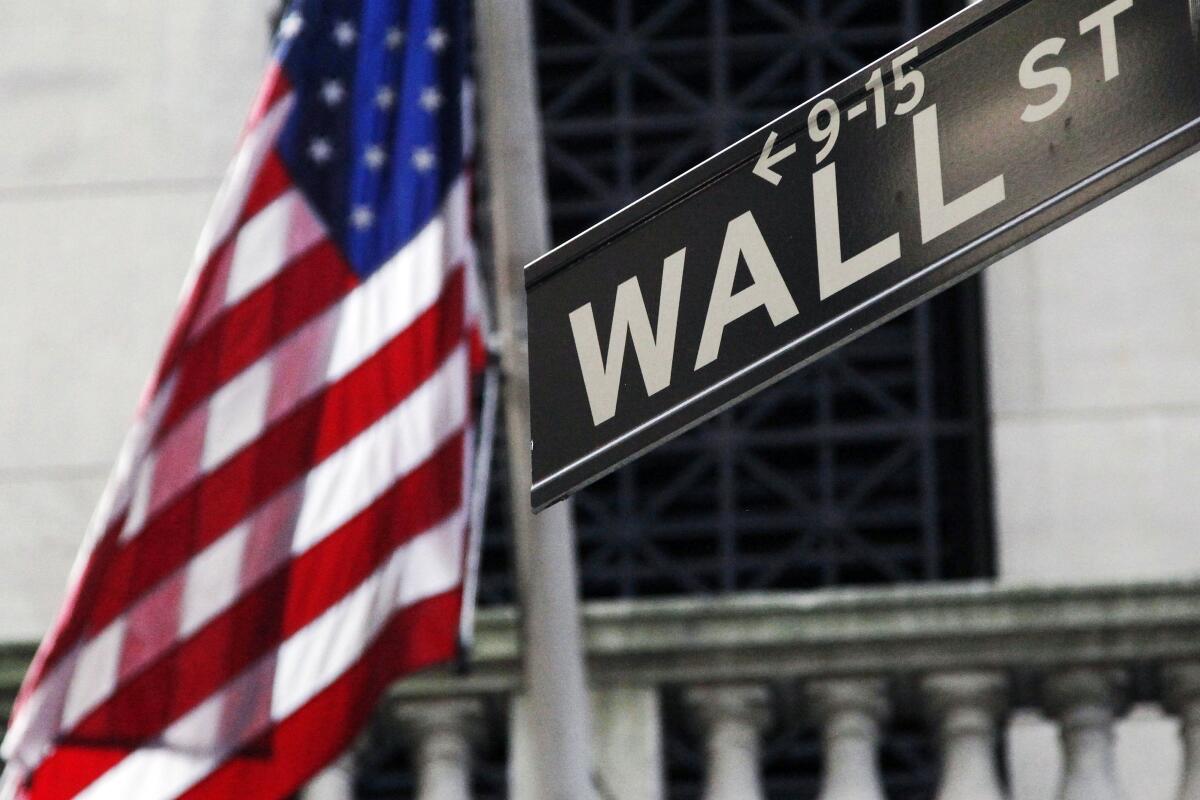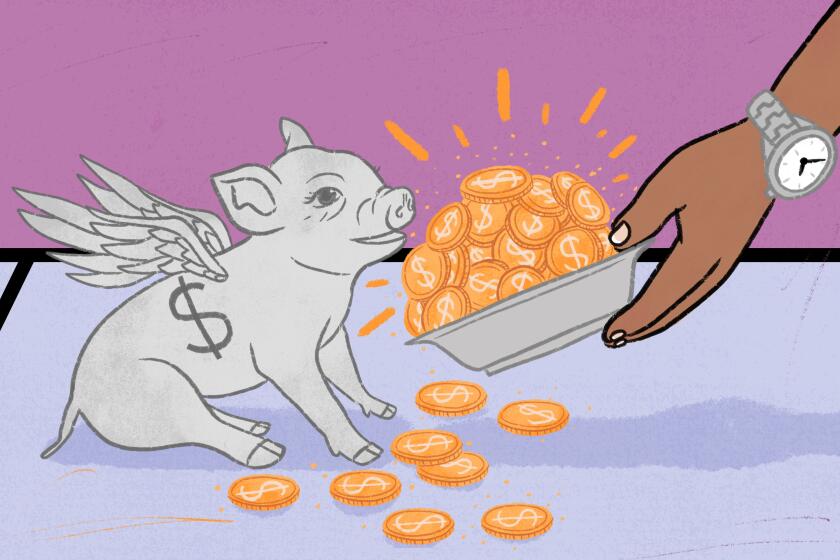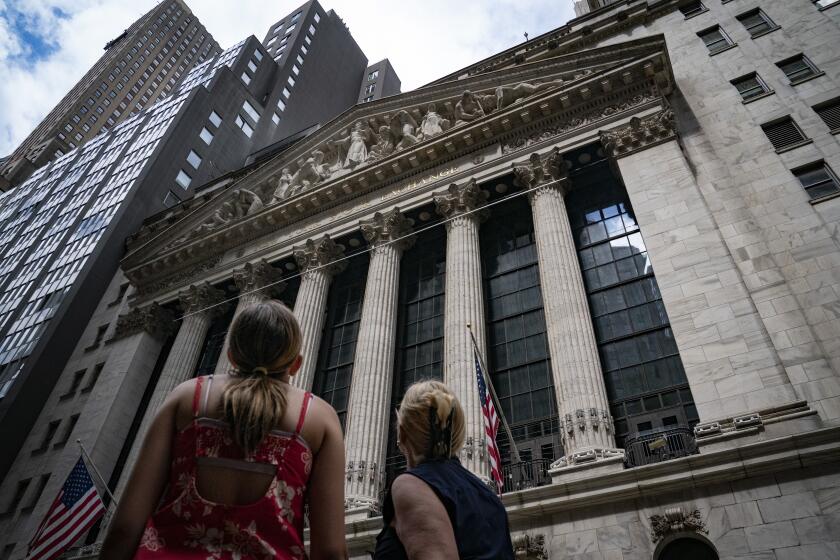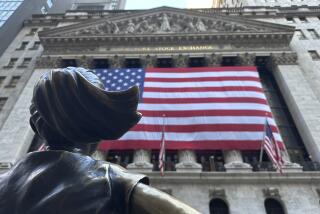Wall Streetâs rally runs out of gas, leaving indexes lower

A wobbly day of trading on Wall Street ended with stocks slightly lower Wednesday as a gangbuster two-day rally ran out of gas.
Stock indexes had been in the red much of the day before briefly turning positive after a late-afternoon burst of buying. The Standard & Poorâs 500 ended 0.2% lower after having veered between a 1.8% decline and a 0.4% gain. The benchmark index was coming off its best two-day rally since the spring of 2020.
The Dow Jones industrial average slipped 0.1%. The Nasdaq composite fell 0.2%. And the Russell 2000 index of small-company stocks closed 0.7% lower.
Bond yields rose broadly. Oil prices also rose after the OPEC+ cartel ordered production cuts.
The broader market is still bruised from its stumble in September, but investors have been hoping that signs of a softening economy may persuade central banks to temper their aggressive interest rate increases. Analysts have said such hopes may be premature.
Donât let the bear market keep you from retiring. But there are a bunch of other financial and emotional factors to consider before taking the leap.
âIâm not surprised with short-term traders looking to take profits now and then decide later whether this is the beginning of a lasting bear market bounce or even the beginning of a new bull market,â said Sam Stovall, chief investment strategist at CFRA.
The S&P 500 dropped 7.65 points to 3,783.28. The Dow slipped 42.45 points to 30,273.87. The Nasdaq slid 27.77 points to 11,148.64. The Russell 2000 fell 13.07 points to 1,762.69.
Financial companies and utilities were among the sectors that weighed down the market. JPMorgan Chase fell 1.2% and Duke Energy dropped 3.2%.
Technology companies and healthcare stocks rose. Qualcomm gained 2.1% and Illumina climbed 6.6%.
Energy stocks gained ground as U.S. crude oil prices rose 1.4%. Exxon Mobil rose 4%.
Your money isnât disappearing; itâs being used to buy stocks at a discount. When the market rebounds, those shares will benefit from the growth.
Treasury yields rose and applied more pressure to stocks after several days of relief. Higher yields mean higher borrowing costs for companies, and they also make bonds more appealing to investors versus stocks.
The yield on the 10-year Treasury, which helps set rates for mortgages and many other kinds of loans, jumped to 3.75% from 3.61% late Tuesday.
The yield on the two-year Treasury, which more closely tracks expectations for Federal Reserve action, rose to 4.13% from 4.10% late Monday.
Wall Street is preparing for the next round of corporate earnings reports to get a better sense of how hard the hottest inflation in four decades is squeezing businesses and consumers.
Higher energy prices, particularly for gasoline, were a big reason for inflationâs surge earlier in the year. Stubbornly hot inflation, despite energy costs easing over the last few months, remains a big focus for investors.
The Fed and other central banks have been raising interest rates to make borrowing more difficult and slow economic growth, but Wall Street is concerned that the potential solution for high inflation could result in a recession.
Investors are looking for signs that the economy is slowing enough to give central banks a reason to ease up on rate increases. Some signs this week included a tamer rate hike by Australiaâs central bank and a U.S. report showing that the number of available jobs plummeted in August.
âWeâve heard about companies that while theyâre not laying people off they are reducing the number of jobs available,â Stovall said. âSo, the higher rates and higher inflation certainly are having their effect on hiring.â
Employment has been a particularly strong area of the economy, and any signs that the hot job market is cooling could mean that inflation might follow. Analysts have said such hopes may be premature. A report on U.S. job growth at private employers came in stronger than expected Wednesday, as did a report on the services sector.
Wall Street will get a more detailed look at employment in the U.S. on Friday with the governmentâs monthly jobs report for September.
Stocks are âin the midst of a tug of war between reality and expectations,â said Terry Sandven, chief equity strategist at U.S. Bank Wealth Management.
The reality is that inflation remains hot while markets expect it has peaked and that the Fed will ease up on rate increases, he said. Trading will probably remain volatile because of that dynamic and other uncertainties hanging over the market.
âWe need time for the pace of inflation to show itâs under control,â he said.
The Fed has said it is determined to continue raising interest rates until it is satisfied that inflation is under control. That resolve has been echoed by some central banks globally.
New Zealandâs central bank raised its benchmark interest rate to 3.5%, saying labor was scarce and inflation remained too high, most recently at 7.3%. The half-point rate increase was the fifth in a row by the Reserve Bank of New Zealand since February.
More to Read
Inside the business of entertainment
The Wide Shot brings you news, analysis and insights on everything from streaming wars to production â and what it all means for the future.
You may occasionally receive promotional content from the Los Angeles Times.











